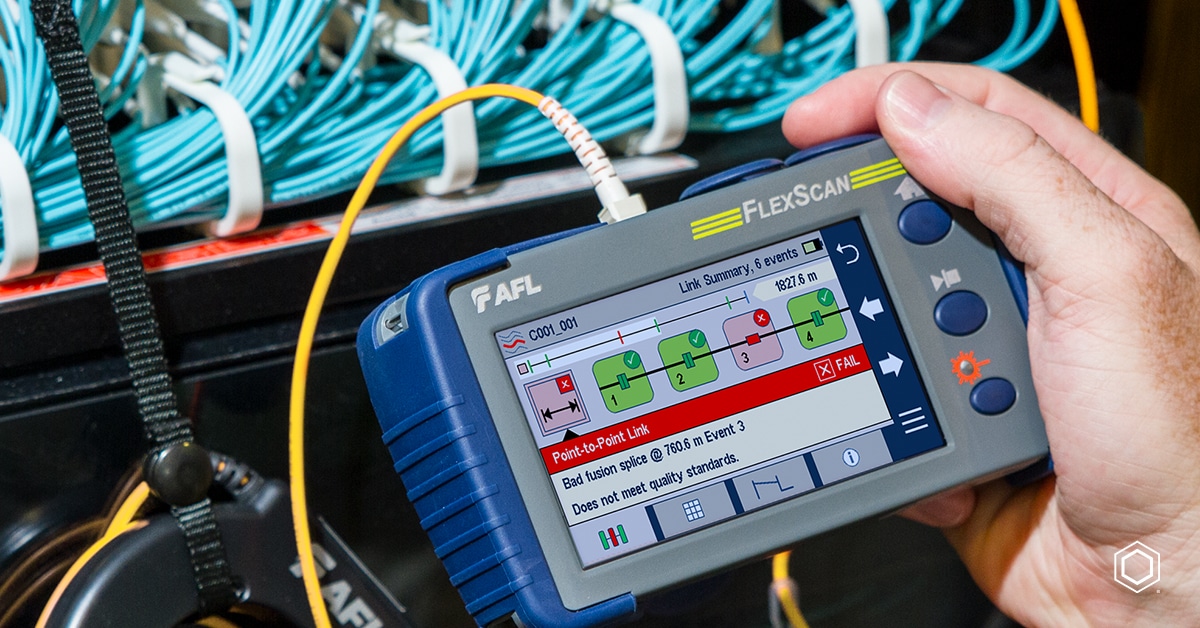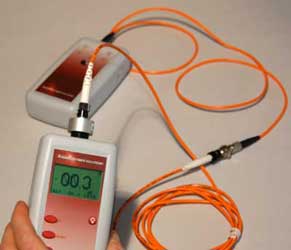The Duty of Optical Fibre Testing in Ensuring High Quality and Efficiency in Connection Solutions
In today's quickly developing digital landscape, the significance of optical fiber screening can not be overstated, as it offers as a foundation for ensuring the quality and effectiveness of connection solutions. As technology continues to advance, the future of optical fiber screening presents intriguing obstacles and possibilities that merit closer examination.
Importance of Optical Fibre Screening
The value of optical fibre testing can not be overemphasized in ensuring the honesty and efficiency of communication networks. As the backbone of modern telecoms, optical fibres facilitate high-speed data transmission, making their reliability critical to operational success. Examining serves as a proactive procedure to determine potential concerns such as signal loss, depletion, and physical damage, which can compromise network performance.
Normal screening allows for the verification of installment high quality and the discovery of flaws that could affect data integrity - optical fibre diameter analyser. By utilizing strenuous screening protocols, network operators can alleviate the risks related to network failures, consisting of downtime and monetary losses. Optical fibre testing makes certain conformity with industry criteria and policies, boosting the total quality of service supplied to end-users.
Eventually, the methodical assessment of optical fibres adds to the long life and effectiveness of communication systems. It enables stakeholders to make educated choices regarding upkeep, upgrades, and troubleshooting. In a landscape where data is significantly important, focusing on optical fibre testing is vital to sustaining robust and effective connectivity services, thereby sustaining the needs of contemporary electronic environments.
Sorts Of Optical Fiber Examinations
Various screening techniques are used to make sure the functionality and integrity of optical fibers within communication networks. These examinations can be generally classified right into 2 primary types: installation tests and maintenance tests.
Installation tests are carried out quickly after the installation of optical fibre cable televisions to validate their performance and integrity - fibre testing equipment. One of the most typical installation tests include Optical Time-Domain Reflectometry (OTDR) tests, which analyze the high quality of the fibre by recognizing mistakes or breaks, and end-to-end loss examinations, which measure the total optical loss from one end of the fibre to the various other
Maintenance examinations, on the other hand, are executed regularly to make sure recurring efficiency and identify possible issues gradually. These include aesthetic examination, which checks for physical problems or inappropriate installations, and continuity examinations, which verify that the signal can pass via the fiber without disruption.
In addition, advanced tests such as Polarization Mode Dispersion (PMD) and Chromatic Dispersion (CD) examinations can be performed to assess the fibre's performance under various problems. By employing these diverse screening techniques, service technicians can preserve high criteria of top quality and dependability in optical fibre networks.
Advantages of Normal Examining
Regular screening of optical fibers plays a vital role in keeping the total performance and reliability of communication discover here networks. By carrying out normal analyses, companies can ensure that their fiber optic installations meet industry requirements and run effectively. This proactive approach assists to identify prospective weak points and deterioration in time, permitting for timely interventions before concerns intensify.

Cost-effectiveness is one more advantage. By resolving minor problems early, companies can prevent the high prices connected with significant repair work or system failings. Regular screening likewise promotes conformity with governing demands, making certain that the network complies with essential safety and security and efficiency criteria.
Usual Problems Determined
Recognizing common concerns in optical fibre networks is crucial for preserving optimal efficiency and integrity. Various elements can add to disruptions, including physical damage, poor installment techniques, and environmental influences.
Physical damages, such as bends, breaks, or abrasions, can dramatically weaken signal high quality. Improper installment strategies, including excessive stress or poor securing of cable televisions, may result in increased depletion and loss of connectivity. Furthermore, ecological aspects such as temperature level variations, dampness ingress, and rodent disturbance can endanger the honesty of the fiber.
Connector problems additionally regularly arise, with incorrect positioning or contamination causing raised insertion loss. Additionally, splicing errors can introduce significant signal destruction if not implemented with accuracy.

Attending to these usual concerns through normal optical fiber testing not just improves network reliability yet additionally optimizes total efficiency, making certain that connection options remain robust and effective.
Future Fads in Evaluating
As the need for high-speed connection remains to rise, the future of optical fiber screening will significantly focus on automation and advanced analytics. The assimilation of expert system (AI) and artificial intelligence (ML) in screening procedures will certainly make it possible for a lot more reliable data analysis and anticipating maintenance, decreasing downtime and improving general network dependability. Automated screening options will certainly streamline the assessment and certification of fiber networks, lessening human mistake and raising screening throughput.
Another substantial trend is the adoption of remote screening innovations. As the release of fiber networks expands into remote and underserved areas, remote testing capabilities will certainly permit service technicians to keep track of and detect network conditions without physical presence, therefore minimizing operational costs and enhancing response times.
Moreover, there will be a shift in the direction of even more comprehensive screening standards that encompass not just typical loss measurements however likewise efficiency metrics such as latency and data transfer application. This alternative technique will assist in far better network administration and optimization methods.
As these fads progress, the optical fibre testing landscape will certainly not just enhance the high quality and efficiency of connection remedies yet likewise support the expanding complexities of contemporary interaction networks.
Verdict
In final thought, optical fiber testing serves as an essential part in keeping the honesty and performance of communication networks. The recurring dedication to regular testing not just enhances information transmission but also straightens with sector requirements, fostering reliability in network infrastructures.